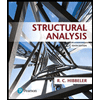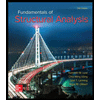
Structural Analysis
6th Edition
ISBN: 9781337630931
Author: KASSIMALI, Aslam.
Publisher: Cengage,
expand_more
expand_more
format_list_bulleted
Concept explainers
Question
- What is the purpose of adding alcohol in test method C173?
-
. When is it necessary to consolidate concrete by vibration in test method C231? Discuss the process
of vibration when placing and consolidating the sample.
-
When rodding a layer of concrete in method C138, is it okay to hit the bottom of the measure? If not,
how is it supposed to be done?
Expert Solution
This question has been solved!
Explore an expertly crafted, step-by-step solution for a thorough understanding of key concepts.
Step by stepSolved in 2 steps

Knowledge Booster
Learn more about
Need a deep-dive on the concept behind this application? Look no further. Learn more about this topic, civil-engineering and related others by exploring similar questions and additional content below.Similar questions
- What is the effect of water–cement ratio on the permeability of hardened concrete? How does permeability affect the durability of the concrete structure?Using Figure 7.33, what is the approximate percent increase in the coefficientof permeability if the water–cement ratio increases from 0.5 to 0.6? Using thesame figure, what is the approximate percent increase in the coefficient ofpermeability if the water–cement ratio increases from 0.5 to 0.7?arrow_forwardTo evaluate the effect of a certain admixture on the flexure strength of concrete, two mixes were prepared, one without admixture and one with admixture.Three beams were prepared of each mix. All the beams had a cross section of 4 in. * 4 in. and a span of 12 in. The third-point loading flexure strength test was performed on each beam after 7 days of curing. The loads at failure of the beams without admixture were 6044, 5071, and 5934 lb, while the loads at failure of beams with admixture were 7299, 7305, and 6983. Determine:a. The modulus of rupture of each beam in psi.b. The average moduli of rupture of the beams without and with admixture.c. The percent of increase of the average modulus of rupture due to adding the admixture.arrow_forwardThree standard mortar cubes were made using nonpotable water available at the job site, and three others were made using potable water. The cubes were tested for compressive strength after seven days of curing and produced the following failure loads in kilograms:Based on these results only, would you accept that water for mixing concrete according to ASTM standards? Why?arrow_forward
- In order to evaluate the suitability of nonpotable water available at the job site for mixing concrete, six standard mortar cubes were made using that water and six others using potable water. The cubes were tested for compressive strength after 7 days of curing and produced the loads to failure (in kN) shown in Table P6.21. a. Based on these results only, would you accept that water for mixing concrete according to ASTM C94? b. According to ASTM C94, are there other tests to be performed to evaluate the suitability of that water? Discuss briefly. TABLE P6.21 Cubes Made with Cubes Made with Potable Water Nonpotable Water 64.6 73.5 70.4 74.8 63.0 79.7 71.6 69.8 70.6 83.7 64.0 74.4arrow_forwardHand written solution is not allowed bro.arrow_forward6.32 The results of an experiment to evaluate the effects of a water reducer are shown in Table P6.32. a. Calculate the water-cement ratio in each of the three cases. b. Using water reducer, how can we increase the compressive strength of concrete without changing workability? Refer to the appropriate case in the table. Chapter 6 Portland Cement, Mixing Water, and Admixtures c. Using water reducer, how can we improve workability without changing the compressive strength? Refer to the appropriate case in the table. d. Using water reducer, how can we reduce cost without changing workability or strength? (Assume that the cost of the small amount of water reducer added is less than the cost of cement.) Refer to the appropriate case in the table. e. Summarize all possible effects of water reducers on concrete. TABLE P6.32 Without Water Reducer With Water Reducer 735 368 2 4,100 Case 1 Case 2 Cement content, lb/yd³ Water content,* lb/yd³ Slump, inches 28-Day compressive strength, psi *Assume…arrow_forward
- Answer carefully the following questions : 1 Die is great Se me Meaning of normal con 3-what is the range of values of standard 4-How the consistency of cement paste is measured? 5-State the significance of initial setting time and final setting time of cement. 6-What is the range value of compressive strength for normal concrete 7 days and 28 days? ODOO TOSTSEC of C e Cheet or aggi gan grading on the properties of concrete? -Describe kinds of slump.. OF MOON Cone. what is the approximate value of Flexural su compressive 10-What is the approximate value of spli compressive strength? nave 25 MPa tor strength if we have 25 MPa forarrow_forward2. You are an inspector on a job site, inspecting strength tests from a job with a design strength of 4500 psi. A total of 12 tests were performed on concrete from this job; the strength test results (in psi) are shown below. 4520 4840 4190 4960 4720 4890 4620 4290 4390 4680 4550 4620 Is this concrete acceptable?arrow_forwardQ1 What moisture condition should the coarse and fine aggregate be in when mixing the concrete? A Unknown B Saturated C Oven Dry D Air Dried E SSD Q2 What restriction is placed on the size of a sample of a concrete batch? A 30 L B 15 L C 20 L D 10 L E 5 Larrow_forward
- Standard deviation is 3.6 MPaarrow_forwardPlease give me both a and b answers a. If a concrete with 28 day compressive strength of 4500 psi is being poured, then it how much strength would you expect after 7 days(assuming good curing conditions)? Explain how you obtain the 7 day strength? b. Briefly explain the effect of water to cement ratio on concrete strength?arrow_forwardUse metric pleasearrow_forward
arrow_back_ios
SEE MORE QUESTIONS
arrow_forward_ios
Recommended textbooks for you

 Structural Analysis (10th Edition)Civil EngineeringISBN:9780134610672Author:Russell C. HibbelerPublisher:PEARSON
Structural Analysis (10th Edition)Civil EngineeringISBN:9780134610672Author:Russell C. HibbelerPublisher:PEARSON Principles of Foundation Engineering (MindTap Cou...Civil EngineeringISBN:9781337705028Author:Braja M. Das, Nagaratnam SivakuganPublisher:Cengage Learning
Principles of Foundation Engineering (MindTap Cou...Civil EngineeringISBN:9781337705028Author:Braja M. Das, Nagaratnam SivakuganPublisher:Cengage Learning Fundamentals of Structural AnalysisCivil EngineeringISBN:9780073398006Author:Kenneth M. Leet Emeritus, Chia-Ming Uang, Joel LanningPublisher:McGraw-Hill Education
Fundamentals of Structural AnalysisCivil EngineeringISBN:9780073398006Author:Kenneth M. Leet Emeritus, Chia-Ming Uang, Joel LanningPublisher:McGraw-Hill Education
 Traffic and Highway EngineeringCivil EngineeringISBN:9781305156241Author:Garber, Nicholas J.Publisher:Cengage Learning
Traffic and Highway EngineeringCivil EngineeringISBN:9781305156241Author:Garber, Nicholas J.Publisher:Cengage Learning


Structural Analysis (10th Edition)
Civil Engineering
ISBN:9780134610672
Author:Russell C. Hibbeler
Publisher:PEARSON

Principles of Foundation Engineering (MindTap Cou...
Civil Engineering
ISBN:9781337705028
Author:Braja M. Das, Nagaratnam Sivakugan
Publisher:Cengage Learning

Fundamentals of Structural Analysis
Civil Engineering
ISBN:9780073398006
Author:Kenneth M. Leet Emeritus, Chia-Ming Uang, Joel Lanning
Publisher:McGraw-Hill Education


Traffic and Highway Engineering
Civil Engineering
ISBN:9781305156241
Author:Garber, Nicholas J.
Publisher:Cengage Learning